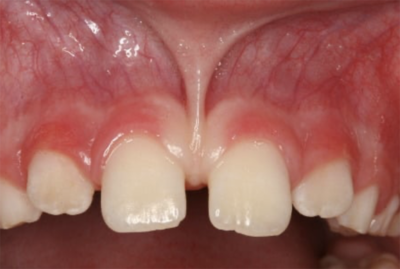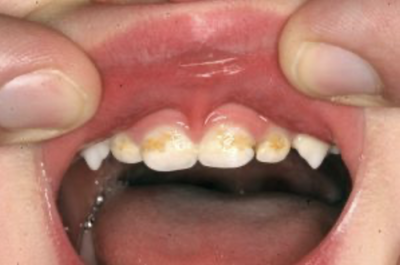Oral Restriction Specialists Melbourne
WHAT ARE ORAL RESTRICTIONS?
Upper lip tie (upper labial frenum) is the piece of connective tissue on the inside of your upper lip. When the connective tissue is too thick or too stiff, it can keep the upper lip from moving freely. This condition is called a restricted lip tie.
Tongue-tie, (short lingual frenum ) or partial ankyloglossia, is an inherited condition in which the connective tissue on the underside of the tongue is too tight or too short. It keeps the tongue from performing its full range of motion and can thereby affect infant feeding, eating, chewing, speech, orofacial and dental arch development, and it can affect breathing pattern if left untreated for too long. However, a tongue tie has different impact on different individuals. Some individuals may have more problems than others, whereas others may not experience any of these.
Tongue Tie
Tongue tie (Ankyloglossia) occurs when the connecting tissue under the tongue is too short or extends too far towards the front of the tongue. Although tongue-tie affects only approximately 4% of children, it can have profound impact on some individuals.
What is an Upper Lip Tie?
A upper lip tie, or upper labial frenum, is the connective tissue that attaches the inside of the upper lip to the upper gums. The main function of the frenum is to provide stability and support for the lip. It looks different in each child’s mouth, can vary in length and thickness, but appears more prominent in infants and toddlers.




Concerned about Tongue Tie?
Tongue-tie can contribute to the following challenges:
• Difficult breastfeeding (see our Infant Tongue Tie page)
• Swallowing issues
• Speech issues
• Dental decay
• Upper and lower jaw development
• Tooth alignment problems and disharmony.
Concerned about Upper Lip Ties?
What are some challenges that may be associated with upper lip tie:
• Difficult breastfeeding (see our Infant Tongue Tie page)
• Prone to injuries/tears
• Disruption to the growth of the upper front teeth, potentially causing a gap in between
• Difficulty maintaining cleanliness, leading to decay
• Receding gums
What are the facts you need to know about treatment for upper lip tie?
WHO MAY BENEFIT FROM AN ASSESSMENT?
Children and Adults with:
• Speech issues – accuracy, clarity, speech sound and speech speed
• Eating/ Swallowing issues – limited tongue movement can lead to impaired swallow motions, choking and fussy eating.
• Inadequate Dental Health – tongue unable to clean food out of the back teeth and gums. Short, restricted upper lip tie can interfere with brushing.
• Upper airway restriction – low tongue positioning resulting in an underdeveloped palate, a narrow constricted soft palate means a small oral airway.
Oral Restriction Treatment (Laser Frenectomy)
At Kiddies Dental Care we provide the following service for children and adults with Tongue Tie and Upper Lip Tie:
Thorough medical and functional history taking
Comprehensive intraoral examination and classification of ties
Discussion of management and management options
Performing surgical management
Tongue Tie FAQs
Upper Lip Tie FAQs
Not sure if your child has a Tongue Tie or an Upper Lip Tie?
Please call our friendly team on 03 9372 8960 or email and we’ll go through your concerns together and see what the best course of management is for your child.